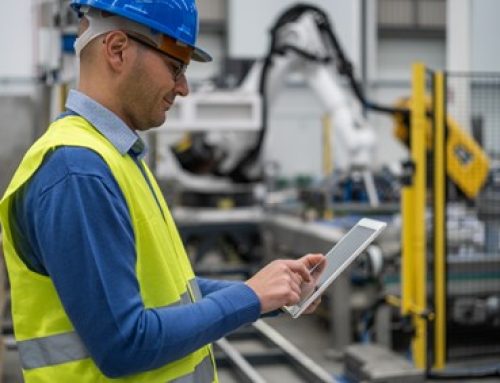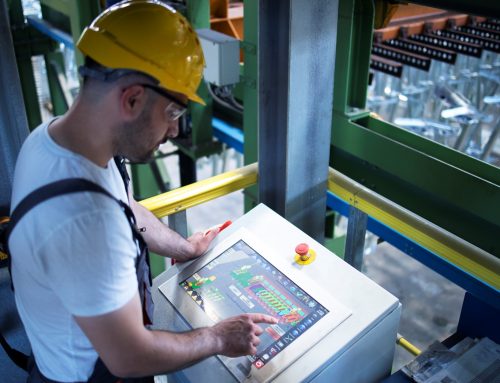With the growing interest of companies for better management of their internal processes, much has been discussed about World Class Manufacturing or World Class Production – the WCM for the intimates.
But with the popularization of this term, there are many myths and mistakes we need to demystify, because they can usually harm the real understanding of what this program is and how it works. I divided this newsletter into two parts to explain ipsis litteris to you everything that we here at Manusis4 know as specialists.
Well, lets start from the beginning. On some vehicles, this acronym appears as World Class Maintenance, which can be translated as World Class Maintenance. This small semantic change is a big mistake, as it reduces a broad concept, which involves the entire management process and several areas of a company, to just one maintenance factor.
Maintenance is an essential part of WCM deployment, but it’s not just that. WCM is a change program designed to achieve a world model. It involves all employees with the concept of continuous improvement, focusing on eliminating waste, reducing losses while improving standards and methods.
WCM is not a project, it never ends. It is a program, an integrated system, the way to Manufacturing! It’s concept was developed by Hayes and Wheewright in 1984, based on good habits practiced by Japanese, German and American industries, considered highlights in their respective acting activities.
However, the methodological management system was created in 2007, focused on automotive companies, by Dr. Hajime Yamashina, teacher on Kyoto University and RSA (Royal Swedish Academy of Engineering Sciences) member.
The WCM methodology, according to Yamashina, brings some indicators that says that only 5% of the activities carried out along the production process add value to the product. The other activities can be divided into: 35% that do not add value to the product, but are necessary so that the product can be manufactured and 60% that can be eliminated, since that effective and innovative actions are taken to do so.
These activities are connected to every factory’s processes, going since material handling and storage arrangement to human errors throughout the manufacturing and/or handling process. As so, the WCM is an operational excellence program and focuses on the quality of the means of production and requires training, besides being mandatory for the entire organization to prepare for this new methodology, which is based on 10 technical pillars and 10 managerial pillars, which guide the entire program.
WCM technical pillars:
1. Occupational safety:
Aims to improve the work environment, making it less propitious to unsafe conditions and attitudes. As so, it is necessary to act through systemic procedures, aiming at accident prevention through observations, analysis and eliminating causes that can lead to accidents at workplace;
2. Cost breakdown:
Consists in transforming losses into cost, quantifying them in tangible measures, such as hours, energy, refuses, among others. This is only possible through comparison of losses with their cause and origin;
3. Autonomous maintenance:
Aims to prevent equipment problems and small stops due to the lack of maintenance of the machinery’s basic conditions. Yamashina clarifies that autonomous maintenance is extremely important for the WCM, as operators can perform essential work on the equipment that will collaborate with the maintenance and preservation of the assets;
4. Focused improvement:
Aims to eliminate large losses identified in the “cost splits” pillar, achieving results in a short term, with great advantages in cost reduction due to losses and waste. This pillar is based on focused improvement. When faced with a problem of a non-standard path, the pillar elaborates a stipulated cycle to find the causes and eliminate them, restoring a pattern or implementing a new one, not limited in finding a corrective action for the problem. The improvement cycle is called PDCA, and will be discussed later, as well as the other constituent tools necessary for the proper functioning of the cycle;
5. Quality control:
It proposes to manufacture products without any type of defect, through the improved research of the capacity and process control. To this end, it makes essential changes in the logic of quality control. That is: it acts not only in controls and deliberations, but also in the internal perspective of the production process, analyzing the causes of poor quality in order to finally remedy them;
6. Logistics and customer service:
It is known for managing the production flow combined with the production system to ensure customer satisfaction. In other words, it aims to produce an efficient flow through analysis of variables involved in the production chain, reducing stock and, also, the possibility of causing damage to products;
7. Professional or planned maintenance:
Covers activities completed with the construction of a maintenance system capable of reducing equipment damage and micro downtimes to zero, achieving savings and increasing the life cycle of machines through maintenance practices based in the capacity to extend the life of components (corrective and preventive maintenance);
8. People development:
It is a premise for implementing the WCM in terms of people’s competences development. This is due to the fact that, in the WCM methodology, the execution of methods and techniques, as well as the results, depends on people. The pillar is based on the assessment of competence-related problems, training to fill this deficiency and, finally, the management of learning paths. Some challenges must be faced for people’s developmentto occur. They are: extinguishing human errors, developing employees in high-level techniques, making autonomous maintenance occur, obtaining good results in process control, motivating and involving people;
9. Environment and energy:
Its purpose is the continuous improvement of the work place or the productive environment, through the involvement with environmental norms and regulations. The focus is on minimizing environmental impacts through individualized losses and actions against waste.
10. Preventive management of machines:
Aims to improve machine’s competitiveness, predicting problems that happens in equipments. This can be done by including in the project all the knowledge and experience achieved with old machines. In order to achieve high quality, minimum costs, reduced project lead time, greater flexibility, safety, ease of operations, reliability and ease of maintenance, the participation of the people involved in the management, supply and operators of the machines is essential, as stated Yamashina.
Next week, we will talk about the 10 management pillars of the WCM and also why making mistakes in the nomenclature and also not looking for the accredited team to serve your company can generate great losses. See you.






Leave A Comment